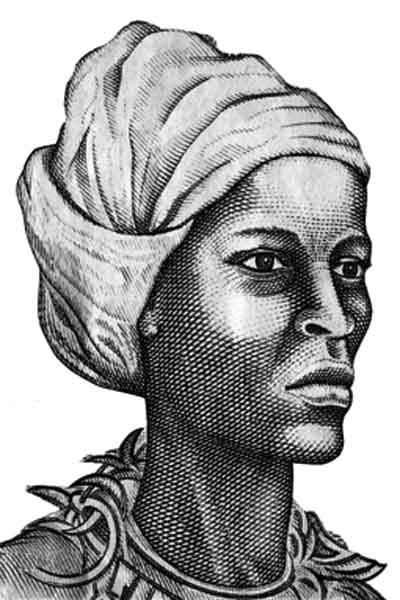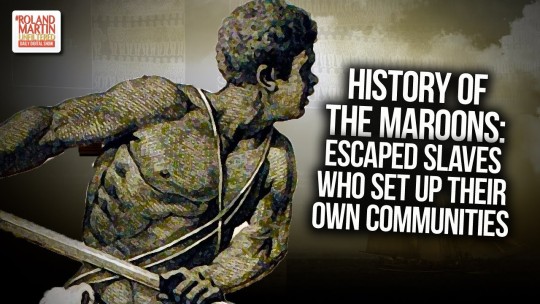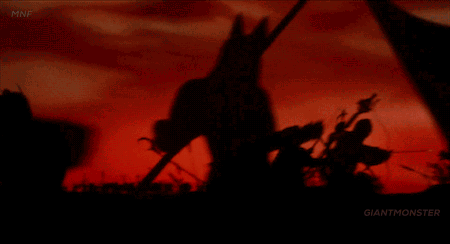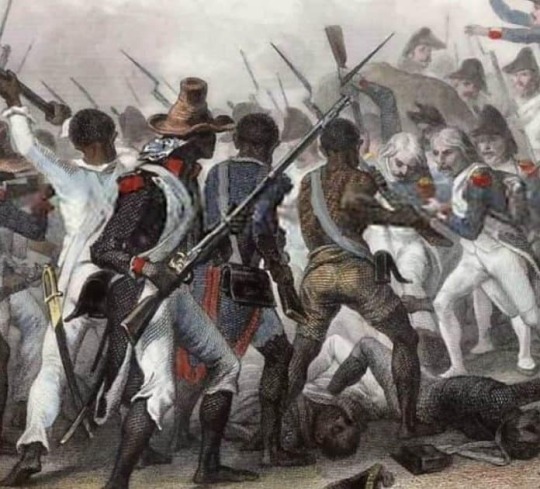#maroons
Text
Maroon Independence celebrations - Jamaica January 6, 2024 Greatness in Accompong #2024
345 notes
·
View notes
Text

they've always said that the reason why slavery revolts didn't work in america is because america had one thing these other slave revolts didn't have working against them: poor white people.
#maroons#jamaica history#colonialism#slavery resistance#african diaspora#history#slavery#poor white people#racism
193 notes
·
View notes
Text
You know what's incredibly upsetting? Seeing so many pro-Israel or pro-Zionist posts parrot that the only reason anyone could be pro-Palestine or call for a free Palestine is because they hate Jews.
I know what this tactic is meant to do and I know how making people apathetic, how discrediting their knowledge of a topic or questioning the genuineness of their empathy and other similar tactics are used to benefit the oppressive group but it's still pissing me off.
I am a descendant of enslaved people.
Our history lessons always begin with the slaughter & genocide of the indigenous peoples that were here first, primarily the Taino, who thankfully have a few descendants living in isolation along with the protected Maroon villages. It is normal throughout high school to take history trips to former great houses & plantations and see for ourselves the sites where our ancestors were brutalized and massacred; the weapons and tools of torture preserved and on display so that we knew but a taste of what they went through.
My university is built on the grounds of a former plantation. There are businesses and homes built on top of mass graves & on top of sites of slaughter. There is literally no escaping our colonial history because it touches everything. Our last names are not even our own! Most of us have English, Scottish and Irish last names given by the plantation owners to our ancestors. Or you know...because many children were the product of rape. We cannot accurately trace our true heritage more than 4-5 generations back because most families have no complete records.
A lot of you like to bring up grandparents. Cool. My great-great grandmother was the daughter of a mulatto free woman and a white Scottish sailor. She was white passing. Because land and work were hard to get here under colonial rule, she left the island for a better life with her husband who was a Cuban born mulatto and they ended up living in the US through WWII and after. They were considered an interracial couple (black & white rather than both being seen as mixed) and could not live in certain places because it was illegal. Papa couldn't find work, was treated horribly, because he had darker skin but Grandma found work passing as white and was treated much better. She worked 2-3 jobs to provide for them and their 5 children.
But, there were times when she would appear darker like if she was out in the sun too long or her curls would start to show and a Jewish neighbour/coworker suggested to her it might be safer to tick Jewish on forms rather than white if her race was ever questioned. I suppose due to that kindness the family formed friendships within the Jewish community where they lived & Grandma's eldest son actually married a Jewish woman. His kids and grandkids are all Jewish and they still live in the US.
I share this specific thing because I have very real concerns for those members of my family. But while I worry for them in this time of increasing anti-semitism and absolutely decry any verbal/physical attacks against them, I am still going to speak against things that are wrong. What Israel is doing is wrong. Of course as a non-Jewish person I can acknowledge I may misstep and if I say/do something that is genuinely anti-semitic I'll take the correction. But if your aim is just to intimidate me into silence it's not going to work.
And trying to tell me 'well black people are not welcomed there or black people wouldn't get treated well in Palestine' as if that affects the cost of bread. Guess what? Black people face racism everywhere. Even among our own and colonialism has a lot to do with that. That same grandmother, I was fortunate to grow up with her in the latter part of her life after she returned to the island and every time I went out with her there were questions of whether my family worked for her. Or why was I, this little black girl with this little old white lady as if I meant her harm. She had to say proudly, "This is my granddaughter." How other people view me or treat me isn't going to stop me from speaking up for what's right.
With the history of my people I could never ever ever side with the oppressor. Ever. Whether its here in the west or in the east, whether it's happening to my fellow black people, or any other group of people, I cannot in good conscience stand with the oppressor. My ancestors were forcibly stripped of their humanity, called savages, animals, barbarians and all of that was brutally beaten into them. That same language and similar acts of brutality are being used against Palestinians today.
You think you can cower me into staying silent on that? With unfounded accusations of hate? I refuse.
N.B. - my use of the word mulatto here is strictly to provide the historical context of how my grandparents were seen/classified and spoken of. It is not a term we use.
#long post#vent post#palestine#pro palestine#free palestine#anti oppression#colonialism#anti colonialism#antisemitism#personal#genocide#anti genocide#social justice#indigenous people#taino#maroons#jamaica#i will not shut up about this#anti zionism#from the river to the sea palestine will be free#i stand with palestine#free palestine 🇵🇸
363 notes
·
View notes
Photo

Slaves escaped frequently within the first generation of their arrival from Africa and often preserved their African languages and much of their culture and religion. African traditions included such things as the use of certain medicinal herbs together with special drums and dances when the herbs are administered to a sick person. Other African healing traditions and rites have survived through the centuries.
The jungles around the Caribbean Sea offered food, shelter, and isolation for the escaped slaves. Maroons sustained themselves by growing vegetables and hunting. Their survival depended upon their cultures, and their military abilities, using guerrilla tactics and heavily fortified dwellings involving traps and diversions. Some defined leaving the community as desertion and therefore punishable by death. They also originally raided plantations. During these attacks, the maroons would burn crops, steal livestock and tools, kill slavemasters, and invite other slaves to join their communities. Individual groups of maroons often allied themselves with the local indigenous tribes and occasionally assimilated into these populations. Maroons played an important role in the histories of Brazil, Suriname, Puerto Rico, Haiti, Dominican Republic, Cuba, and Jamaica.
There is much variety among maroon cultural groups because of differences in history, geography, African nationality, and the culture of indigenous people throughout the Western Hemisphere.

#african#western hemisphere#nationality#indigenous#slavemasters#taino#dominican republic#maroons#puerto rico#haiti#jamaica#military#kemetic dreams#africans#native american#native americans#caucasian#asian#asians#asian americans#african language#african traditional medicine
203 notes
·
View notes
Text
youtube
The Jamaican Maroon Wars : Liberated Slaves vs British
from History Dose
32 notes
·
View notes
Text

🇯🇲 Queen Nanny of the Maroons. More here at Wikipedia
11 notes
·
View notes
Text
i always see people starting those tag things on here so i wanna do one.
favorite singer: taylor swift
least favorite baked good: lemon meringue pie
best book/favorite book you've ever read: the book thief.
tags: @urfav-mirrorball @swifitelover22 @lanasforlife @pho3b3-tayl0r-luvr and anybody who wants to participate!
(I really hope this works lol and doesn't make me look stupid)
#tag game#taylor swift#maroons#lemon meringue#the book thief#tags#fyp tumblr#explore page#i love taylor with all my heart#(your tags here)#idk what tags to use#tagging#tumblr things#tumblr stuff
18 notes
·
View notes
Photo

Source: Elizabeth Farfán-Santos - Black Bodies, Black Rights: the politics of Quilombolismo in Contemporary Brazil (2016: 110)
19 notes
·
View notes
Note
Not sure if this is something that would be interesting for you to answer, but do you think there is any way a slave revolt at some point early on (or just before the civil war) could’ve established some kind of break away nation in the south? There’s so much emphasis on edge lord “what if the bad guys win!” type stuff that I’ve tried pondering this but I’m not sure if it would be possible. Do you think this could’ve been done with the right “here’s money to look the other way big northern business and political people?” Or would it always be doomed to fail because even if luck broke the revolt/revolutions way against the whole south the north would just send an army to quash it because most white northerners would still be upset white people were dieing/that part of the country was “being taken away.”
Ah, the dream of self-determination in the Black Belt...
So if we're talking sometime close to the Civil War, what we're really talking about is the John Brown scenario, whereby a state for freedmen would be established in the hill country of Appalachia. I think the problem is that, even had John Brown's raid on Harper's Ferry not gone awry so quickly (and had he had a more realistic number of soldiers), the speed at which a U.S military dominated by Southerners like Robert E. Lee and Stonewall Jackson as well as multiple state militias mobilized to suppress the revolt speaks to how well-developed the American system of repressing slave revolts had become in the 19th century.
If we're talking earlier, then I think you do have some historical examples in the form of maroon communities like the Black Seminoles in Florida or the Great Dismal Swamp in Virginia and North Carolina, although there you're talking about runaways rather than a slave revolt. The problem as I see it is that you're combining the practical difficulties of carrying off a slave revolt - which always, always, always faced massive state repression - with the difficulties of maintaining an independent state in the face of American imperialism.
For example, the Black Seminoles were able to prosper in Florida because it was a Spanish colony and the Spanish had a policy of providing refuge to runaway slaves as a measure to destabilize the English and eventually Americans to their north - however, the existence of an armed native/freedmen state just on the other side of the Georgia state line prompted Andrew Jackson to launch a series of "punitive expeditions" that forced Spain to hand over Florida to the United States, which allowed him to bring in the U.S military to try to force the Seminoles into reservations and then try to remove them to Oklahoma. The Seminoles effectively used guerilla tactics to resist the U.S military for some time, but when they bring in 30,000 troops and use starvation tactics, they were absolutely decimated.
26 notes
·
View notes
Video
Palmares (quilombo)
https://en.wikipedia.org/wiki/Palmares_(quilombo)
Palmares, or Quilombo dos Palmares, was a quilombo, a community of escaped slaves and others, in colonial Brazil that developed from 1605 until its suppression in 1694. It was located in the captaincy of Pernambuco, in what is today the Brazilian state of Alagoas. The quilombo was located in what is now the municipality of União dos Palmares.[2]
Background
The modern tradition has been to call the community the Quilombo of Palmares. Quilombos were settlements mainly of survivors and free-born enslaved African people. The quilombos came into existence when Africans began arriving in Brazil in the mid-1530s and grew significantly as slavery expanded.
No contemporary document called Palmares a quilombo; instead the term mocambo was used.[3] Palmares was home to not only escaped enslaved Africans, but also to Indigenous peoples, caboclos, and poor or marginalized Portuguese settlers, especially Portuguese soldiers trying to escape forced military service.[4]
#tiktok#americas#chattel slavery#maroons#brazil#trans atlantic slave trade#portugal#dutch#history#resistance#Palmares#Quilombo#slavery#palm trees#indigenous#wikipedia#africa
19 notes
·
View notes
Text
Queen Nanny of the Maroons

Nanny, known as Granny Nanny, Grandy Nanny, and Queen Nanny was a Maroon leader and Obeah woman in Jamaica during the late 17th and early 18th centuries. Maroons were slaves in the Americas who escaped and formed independent settlements. Nanny herself was an escaped slave who had been shipped from Western Africa. It has been widely accepted that she came from the Ashanti tribe of present-day Ghana.

Nanny and her four brothers (all of whom became Maroon leaders) were sold into slavery and later escaped from their plantations into the mountains and jungles that still make up a large proportion of Jamaica. Nanny and one brother, Quao, founded a village in the Blue Mountains, on the Eastern (or Windward) side of Jamaica, which became known as Nanny Town. Nanny has been described as a practitioner of Obeah, a term used in the Caribbean to describe folk magic and religion based on West African influences.
Nanny Town, placed as …[Read more here]
Source: BlackPast.org, Wikipedia
Visit www.attawellsummer.com/forthosebefore to learn more about Black history.
Need a freelance graphic designer or illustrator? Send me an email.
#Nanny Town#Jamaica#Caribbean#Queen Nanny#Maroons#Ashanti people#Ghana#west Africa#Obeah#African Diaspora#Moore Town#Windward Maroons#slavery#slaves#enslaved people#Black history#For Those Before
42 notes
·
View notes
Text
youtube
The Jamaican Maroons were runaway slaves who fought the British during the 18th century. When the British invaded Jamaica in 1655 the Spanish colonists fled leaving a large number of Africans who they had enslaved. Rather than be re-enslaved by the British, they escaped into the hilly, mountainous regions of the island, joining those who had previously escaped from the Spanish to live with the Taínos. They were very organized and knew the country well. Because of this, additional runaway slaves joined them. The two main Maroon groups were the Leeward and the Windward tribes, the former led by Cudjoe in Trelawny Town and the latter led by his sister Queen Nanny (and later by Quao). Over time, the Maroons came to control large areas of the Jamaican interior and they often moved down from the hills to raid the plantations. This resulted in the First Maroon War. In 1739-40 the British government in Jamaica came to an agreement with the Maroons. They were to remain in their five main towns Accompong, Trelawny Town, Moore Town, Scots Hall and Nanny Town, living under their own chief with a British supervisor. In exchange, they agreed not to harbour new runaway slaves, but rather to help catch them. They were paid a bounty for each returned slave. This last clause in the treaty naturally caused tension between the Maroons and the enslaved black population, although from time to time runaways from the plantations still found their way into Maroon settlements.
6 notes
·
View notes
Photo

Happy Father’s Day!
[ID: Digital art of Mr. Scott and Madi from Black Sails. Mr. Scott is brushing Madi’s cheek affectionately. The background is light brown with a dark gray circle. /end ID]
88 notes
·
View notes
Text
The Negro Fort (Florida), a story - African American Registry
The Negro Fort (Florida), a story

Arial Drawing
*The Negro Fort is celebrated on November 13, 1814. Also known as Fort Gadsden and the Prospect Bluff Historic Site, it is located in Franklin County, Florida.
It was constructed on the Apalachicola River, 6 miles SW of Sumatra, Florida. The British built the site during the War of 1812. After the British evacuated Florida in 1815, they allowed the members of the disbanded Corps of Colonial Marines to occupy it, deliberately leaving their munitions behind. Since the British had not named it, Americans started referring to it as Negro Fort. It was destroyed in a river attack by U.S. forces in 1816.
The Florida panhandle was mostly wilderness before 1814. Its population at the time is unknown, except for isolated reports. Like the rest of Florida, many Native American refugees from the United States merged into a new ethnicity, Seminoles. It provided excellent cover for escaped slaves, who, since they shared a common enemy, got along with the Seminoles fairly well; "over time, a bond developed between escaped Africans and the Seminoles that only increased with time and white pressure for their return." Some became Black Seminoles. There was "reciprocal respect and affection"; the former slaves, who knew English, served as interpreters. This predecessor of the Underground Railroad ran south.
The biggest issue about the area discussed by whites was how to get escaped slaves back or compensation for them and prevent or reduce future escapes. The return of Native Americans was unwanted, and they were soon forcibly removed from Florida as well. As was customary before railroads, settlement took place first along rivers. The name Apalachicola derives from the Apalachee who settled along it before colonial invasions. Settlement at Prospect Bluff by maroons (escaped slaves and their descendants), Seminoles, and a few Europeans are documented at the end of the eighteenth century.
When the British withdrew, they deliberately left all their weapons, hoping the locals would use them to defend themselves from the U.S. attempts to re-enslave them, just as African and Native Americans had assisted the British during the American War of Independence. Some of the Native Americans (Seminoles and Red Stick Creeks) left; they had more options than the escaped slaves because there were Native American communities in Florida they could go to, and no one was looking for them; there was no other community of maroons closer than Angola, Florida. Some remained, along with many of the trained soldiers of the disbanded Corps of Colonial Marines, a British Army regiment of freed slaves. Over the next year, the fort became a growing colony of escaped slaves from Georgia and the Mississippi Territory and became known as the Negro Fort.
It was the center of North America's largest community of free Blacks before the American Civil War. The fort, located as it was near the border, was seen by the U.S. as "a beacon of light to restless and rebellious slaves," "a center of hostility and above all a threat to the security of their slaves," "a direct threat to the slave-holding interests rapidly flocking to the newly opened lands in what is today Mississippi and Alabama." On April 8, 1816, General Andrew Jackson ordered General Gaines to "take care of the situation" because the Fort "ought to be blown up"; it was only fomenting "rapine and plunder," and he should "return the stolen Negros and plunder to their rightful owners." On April 23, he complained to the West Florida military governor, Mauricio de Zúñiga.
On May 26, 1816, the governor told Jackson that he could not act; Jackson then proceeded with his plans to destroy the Fort. On July 27, 1816, American forces entered the opening to the fort's powder magazine, igniting an explosion that was heard more than 100 miles away in Pensacola, and destroyed the fort, killing all but 30 of 300 occupants. It has been called "the single deadliest cannon shot in American history." It was also "the largest battle in history between fugitive slaves and U.S. forces seeking to re-enslave them." The trading post of John Forbes and Company, storekeeper Edward Doyle, was reestablished following the fort's destruction.
Fort Gadsden was built in 1818 within the former walls of the former Negro Fort. The site has been known by several other names, including Fort Blount, African Fort, and Fort Apalachicola. Listed in the National Register of Historic Places, the Prospect Bluff Historic Site is located in the Apalachicola National Forest and is managed by the U.S. Forest Service. The process of memorializing the site began in 1961, when Florida acquired a parcel of 78 acres (32 ha), including the location.
Ownership was later transferred to the federal government and named a National Historic Landmark in 1972. The site contains an explanatory kiosk with artifacts, a picnic area with a pavilion, grills, and restrooms. Four historical markers are Fort Gadsden, British Fort Magazine, Steamship Tragedy, and "Millie Francis." There is no marker for the Negro Fort.
#florida#Negro Fort#fort gadsden#appalachicola#prospect bluff#The Negro Fort (Florida)#Black floridans#Seminoles#Black Seminoles#Creeks#spanish#Maroons#escaped black people
5 notes
·
View notes
Text

Colonial era
In the New World, as early as 1512, African slaves escaped from Spanish captors and either joined indigenous peoples or eked out a living on their own. The first slave rebellion occurred in present day Dominican Republic on the sugar plantations owned by Admiral Diego Columbus, on 26 December 1522, and was brutally crushed by the Admiral. The first maroon communities of the Americas were established following this revolt, as many of the slaves were able to escape. This was also to give rise to a wave of Dominican maroons who went on to lead the first maroon activities of the Americas. Sebastián Lemba, born in Africa, successfully rebelled against the Spaniards in 1532, and banded together with other Africans in his 15-year struggle against the Spanish colonists.
Lemba was eventually joined by other maroons such as Juan Vaquero, Diego del Guzmán, Fernando Montoro, Juan Criollo and Diego del Campo in the struggle against slavery. As the maroons threatened Spanish commerce and trade, Spanish officials began to fear a maroon takeover of the island. By the 1540s, maroons had already controlled the interior portions of the island, although areas in the east, north, and western parts of the island were also to fall under maroon control. Maroon bands would venture out throughout the island, usually in large groups, attack villages they encountered, burn down plantations, kill and ransack the Spaniards, and liberate the slaves. Roadways had become so open to attack, the Spaniards felt it was necessary to only navigate in groups. Dominican maroons would be present throughout the island until the mid 17th century.

#african#afrakan#kemetic dreams#africans#brownskin#afrakans#brown skin#maroons#maroon#african culture#dominician#dominican#africa#sebastian lemba#spaniards#dominican republic#dominican mami
35 notes
·
View notes
Text

The Unbelievable Jamaican Slave Uprising that Led to Revolution
#The Unbelievable Jamaican Slave Uprising that Led to Revolution#Jamaica#Sam sharpe#british#colonialism#slavery in jamaica ends#Maroons
5 notes
·
View notes